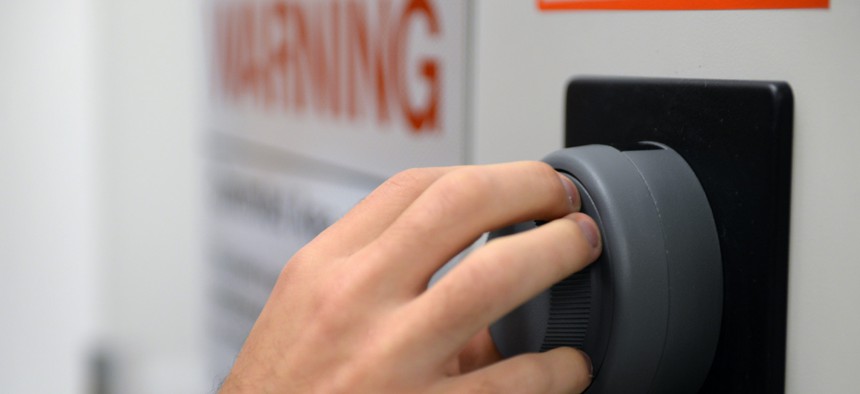
U.S. Air Force / Airman Jason W. Cochran
The Pentagon will create an office to monitor users and insider threats in the wake of leaks
Review came after a junior airman was charged with posting Ukraine war documents and other secret information online.
The Defense Department says it will improve how it monitors people who handle classified information, based on the findings of a 45-day security review conducted after the leak of dozens of classified documents.
The changes include creating a new office—the Joint Management Office for Insider Threat and Cyber Capabilities—to oversee user activity and improve “threat monitoring,” as well as building a centralized tracking system for the department’s secret facilities, and beefing up accountability and security for top secret information, according to a June 30 memo from Defense Secretary Lloyd Austin.
“What we're doing right now is to make sure that those types of [user activity monitoring] tools are used appropriately within the department and that we've appropriately resourced that program given its applicable uses,” a senior defense official told reporters Wednesday.
The review was announced in April, after a trove of classified documents—including assessments of the war in Ukraine—were posted on a Discord server. Airman 1st Class Jack Teixeira, a Massachusetts Air National Guardsman, has been charged with retaining and distributing classified documents. He pleaded not guilty.
The review included a 50-question survey for DOD organizations “to self-assess the current state of their personnel security, information safeguarding and accountability, physical security, and education and training posture,” according to a Pentagon fact sheet. Those responses were analyzed by a team that also “reviewed existing policies and guidance documents, and identified areas for improvement and best practices across DOD.”
While the review determined that “the overwhelming majority” of people with access to classified information adhere to policies and procedures, it found areas for improvement in the DOD’s “security posture and accountability measures,” the fact sheet said.
The review showed the Pentagon must revisit how it uses technology to monitor users, such as “print tracking, those types of things, so that we have better accountability for when individuals are working in classified environments and printing materials, for example. Or when we have new technology that allows us to better understand what users are doing on the system, what products for example they're accessing,” the senior defense official said.
The memo calls for “a phased approach to increase accountability, manage access, and increase security to classified data by August 28, 2023” and have guidance issued to “immediately enhance accountability and control of top secret information, including a requirement to appoint Top Secret Control Officers.”
Austin also directed DOD organizations to plan for “appropriate electronic device detection systems and mitigation measures” in all sensitive compartmented information facilities, or SCIFs, and special access program facilities, or SAPFs, by the end of next September. The reviewers found the technology was not being used the same way across the board.
“It helps with alerting people who just do it by accident, it helps with detection, all of those things,” the senior defense official said. “And so I think we saw in the surveys some required it, some did not. And then we also saw that there was a best practice there that we could look at over the next year.”
The DOD also wants to provide more clarity in classified information policies, because reviewers found ambiguities were creating “inconsistencies as you get further and further out into the department,” the senior defense official said. One example is the requirement for a top secret control officer.
“I think our public facing policy says that they're optional, but then if—for different classifications, you have to have control officers,” the official said. “Then if you get into what is a reportable offense, and who you have to report it to, some of that is also, I think, confusing if you're a local level security manager, you know, managing a joint unit, for example. Who do you report it to? How do you do all of that?”






